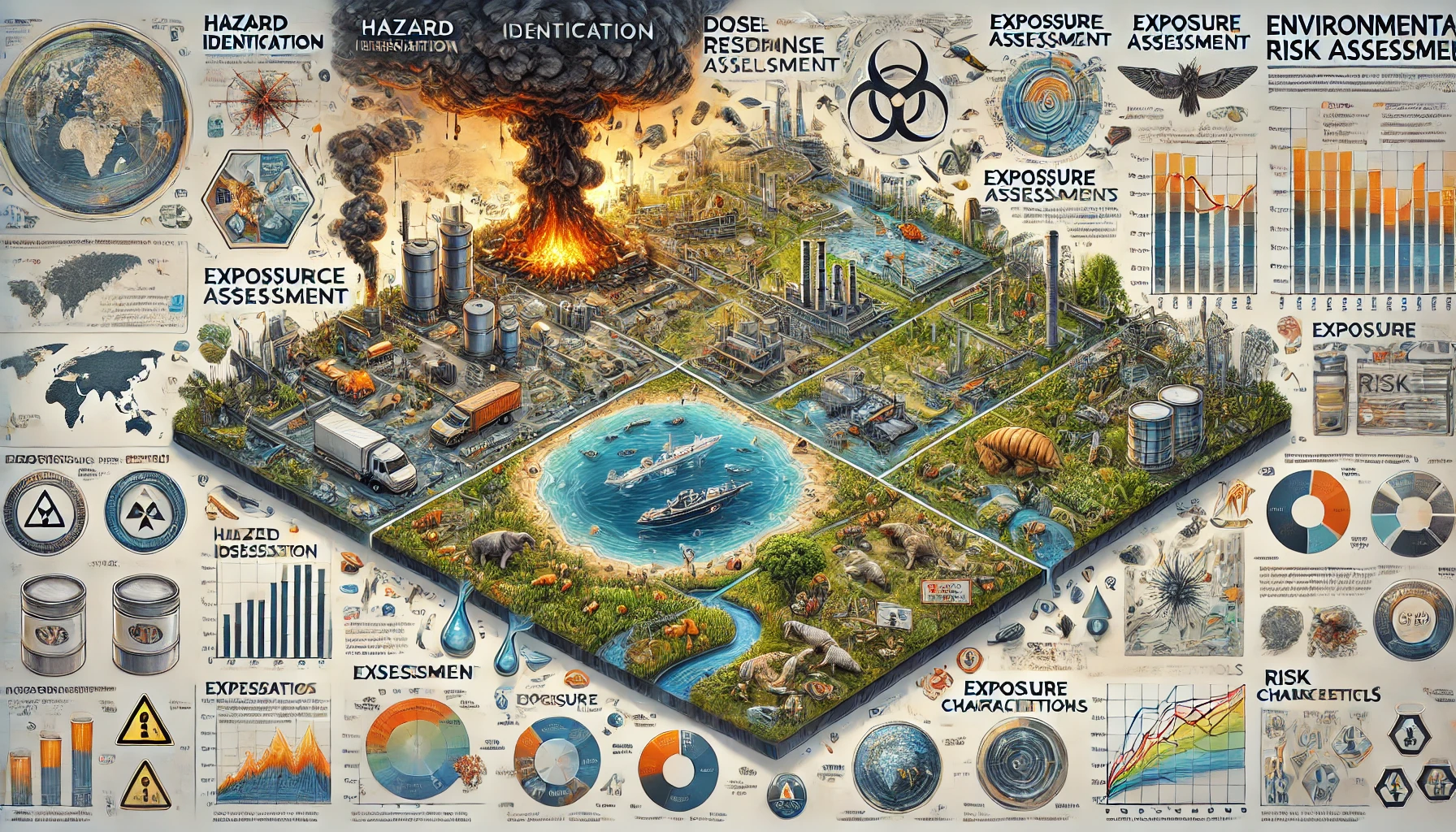Environmental risk assessment (ERA) is the methodical process of determining, from exposure to different dangers, the probability of negative environmental outcomes. Chemical pollutants, industrial activity, or natural calamities could all create these hazards. Minimizing damage to ecosystems, species, and human populations is the aim.
What are the four components of an Environmental Risk Assessment?
ERA uses a four-key component, ordered framework:
- Hazard Identification: Finding the possible environmental risks with harm-causing power comes first. Among these are natural calamities, oil spills, and poisonous chemicals.
- Dose-Response Assessment: This stage looks at the link between the degree of exposure and the possibility of negative consequences. It sets the limit of exposure one can bear before negative consequences start to show.
- Exposure Assessment: The degree, frequency, and scope of exposure to the found dangers are assessed in exposure evaluation. Understanding who or what is at risk depends on this last stage.
- Risk Characteristics: At last, the information from the past stages is combined to project the general risk. This covers the possibility and degree of negative consequences.
What Is the Formula for Environmental Risk Assessment?
Generally speaking, environmental risk is calculated as Hazard times Exposure.
- Hazard: the potential for harm.
- Exposure: The degree and probability of coming into touch with the risk.
For a chemical leak, for example, the risk relies on the substance’s toxicity (hazard) as well as the closeness and length of exposure.
Key Steps for Conducting an Environmental Risk Assessment
ERAs are accomplished by a methodical process:
- Plan and scope clearly the goals, extent, and participating parties.
- Data collection entails compiling pertinent information on hazards and the surroundings.
- Analyze the facts and create plans of action to reduce risk.
- Apply the risk management strategy, then track development.

Various Forms of Environmental Hazards
One can classify environmental hazards into:
- Natural disasters: including floods, hurricanes, and earthquakes.
- Risks Created by Humans: Industrial spills, deforestation, and pollution.
- Long-term impacts: like climate change, represent chronic risks.
- Acute Risks: Like oil spills, immediate effects.
Download the Template in Microsoft Word
Making an environmental risk assessment becomes easier when one uses a ready-made template. One can be obtained like follows:
Why use a template?
Including all required elements, including hazard identification and risk categorization, a template guarantees it offers a homogeneous structure and saves time.
Steps for downloading the template:
- See a trustworthy internet site providing free templates.
- Choose a template depending on your project or sector of business.
- Enter particular project statistics to customize it.
FAQs on Environmental Risk Assessment
- What is the difference between environmental risk and impact assessment?
- While ERA focuses on risks and their likelihood, Environmental Impact Assessment evaluates the broader effects of a project or activity on the environment.
- How often should risk assessments be updated?
- Risk assessments should be reviewed annually or when new hazards are identified.
- What are some common tools for ERA?
- Tools include GIS mapping software, risk matrices, and specialized modeling software.
- What industries use environmental risk assessments?
- Industries like mining, oil and gas, and agriculture rely heavily on ERA to manage risks.
- Can ERA help in climate change mitigation?
- Yes, ERA identifies risks from climate change, helping organizations plan adaptive measures.
- What qualifications are required to perform an ERA?
- Typically, professionals with backgrounds in environmental science, engineering, or public health conduct ERA.
An essential step in order to protect our earth from possible damage is environmental risk assessment. Finding dangers, evaluating exposure, and putting mitigating plans into action will help to guarantee a better and more sustainable future.
